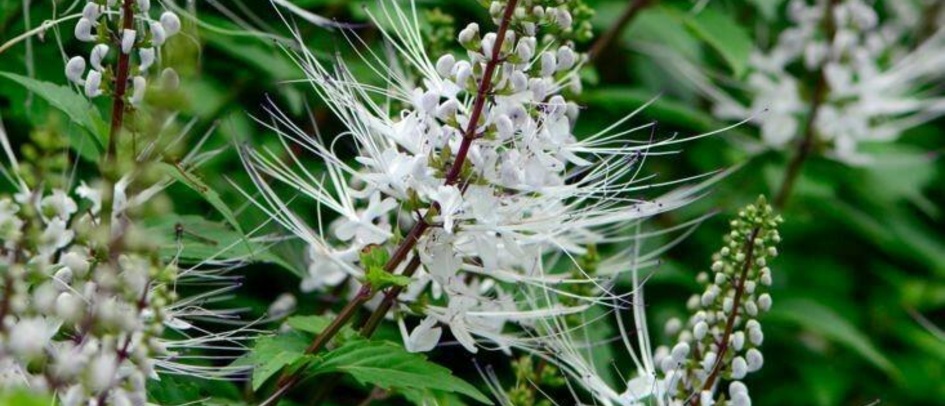Java tea is an herbal tea made form the Orthosiphon Stamineus herb. The name is derived from Greek. The Greek word “Orthos” means straight and “Siphon” means tube. The name “Stamineus” means stringy, this is a reference to the long stamens of the herb plant. Other names used for this tea are Kumis Kucing or cat’s whiskers. The last name refers to the long stamens that resemble the whiskers of a cat.
The plant has been known for a long time as a medicinal herb to the people of Indonesia. Because of this, it became known to the English and Dutch colonists in the past. In the 16th century, Java was a colony of the Netherlands for a long time and they traded with the VOC. In this period, it was mainly about spices and tea. Today the herb is still used as a medicinal herb, but mainly as an herbal tea. Today, the tea plantations on Java are still characteristic of the Indonesian island. You can also visit them and see the process of how this tea is being made. And you can of course also taste the tea, we highly recommend to go there if you can!
Blog
Herbal tea: Java tea

Tea is grown on more than 122.000 acres of land on all Indonesian islands. This is more than 136 million tea. The main plantations are located on the country’s largest islands Java and Sumatra. West Java in particular is an important place for growing tea plants. This is where 70 percent of the Indonesian tea is being produced. The remaining percentage of tea is grown in central Java and North Sumatra.
In the past, only black tea was grown on Java, but because of changes and questions about different sort of teas, many plantations switched to other methods. This is how the production of green tea began in 1988. Java herbal tea is often used in blends with different green teas. It is striking that the tea from Indonesia is mainly used for export, in contrast to the teas form other Asian countries. The tea is used in many blends.

A women’s job
All over Indonesia, including Java, tea picking is real women’s job. They usually live and work on the plantations. There is usually a sort of village built around the plantation with houses, shops and playgrounds. The women of the tea plantations work all day with scissors to cut the right tea leaves and put them in the baskets on their backs. Characteristic it the large hat that protect them from the sun.
Java tea is mainly used for a bacterial bladder, urinary tract in case of a swelling or inflammation and kidney stones. It is a relatively strong kidney herb and has a diuretic effect. This is a difficult word for a drug that increases the amount of water produced by the kidneys. In other words, it increases urine productions, so you have to pee a little more than usually.
The area between Bogor and Bandung is known for its many tea fields and plantations. Tea plantation of Malabar, this plantation dates from the Dutch colonial era and was founded in 1896. Today the old Dutch house, can still be visited, it has been renovated and with many antiques. An hour south of the tea plantation in Malabar is the Santosa Estate where the tea from Tea Cultures comes from. Try the Java Dry Monsoon today and experience the great taste and what it does for your body!
